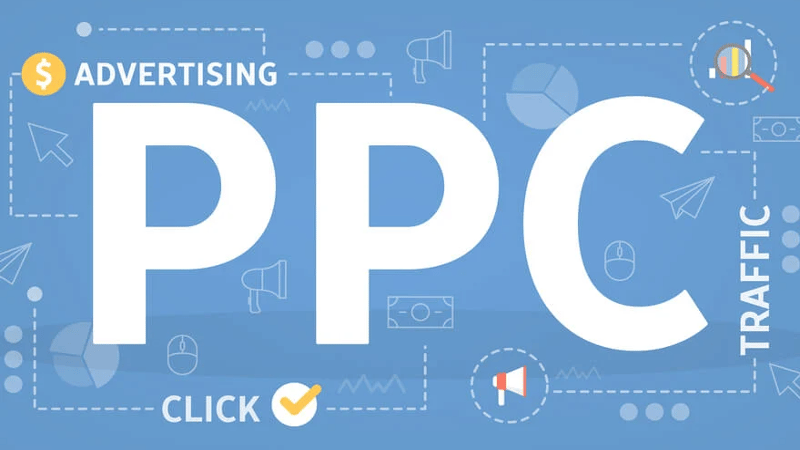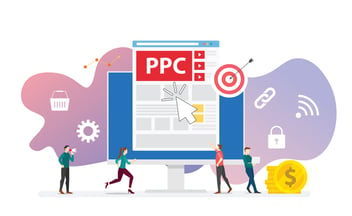What is Return on Ad Spend (ROAS), and What Constitutes a Good One?
Imagine pouring money into an advertising campaign, but having no clue if it's actually bringing in more business. That's the danger of neglecting Return on Ad Spend (ROAS), the golden metric that separates reckless spending from strategic marketing magic.
What is a Return on Ad Spend (ROAS)?
Understanding the fundamental concept of Return on Ad Spend (ROAS) is essential for businesses striving to maximize the impact of their advertising efforts. At its core, ROAS is a powerful financial metric that quantifies the revenue generated for every dollar spent on advertising. It is a key performance indicator (KPI) that transcends mere expenditure tracking, offering a deeper and more meaningful evaluation of the actual returns from advertising campaigns.
ROAS is a critical metric that meticulously gauges the effectiveness of each dollar invested in advertising, providing a clear and insightful measure of the return on that investment.
The formula for ROAS is simple yet highly informative. It's expressed as the ratio of revenue generated from ads to the cost incurred in running those ads. Mathematically, ROAS is calculated as follows:
ROAS = Conversion Value / Ad Spent.
The cost of ads can also include: agency fees, creatives fees, and other expenditures.
This formula demonstrates the relationship between the revenue generated from ads and the direct investment made in advertising, providing a numerical representation of the efficiency and success of a particular campaign or advertising strategy.
ROAS and ROI
ROAS, essentially a facet of the broader concept of Return on Investment (ROI), underscores the importance of achieving a positive financial outcome from advertising endeavors. While ROI encompasses various aspects of business investments, ROAS focuses specifically on the effectiveness of ad spending and intends to eliminate Wasted Ad Spend.
This focus on ROI is particularly crucial in today's competitive digital landscape, where businesses are constantly vying for consumer attention. ROAS becomes a compass, guiding marketers towards strategies that drive visibility and engagement and yield substantial returns, ensuring that every marketing dollar contributes meaningfully to the bottom line.
ROAS in Marketing Strategy
Unlike traditional metrics that may focus solely on reach or engagement, ROAS offers a more financially nuanced perspective. It allows businesses to measure the direct impact of advertising efforts on revenue, making it an indispensable metric for gauging success in today's data-driven marketing environment.
ROAS plays a pivotal role in shaping budget allocation strategies for marketing campaigns. By assessing the revenue generated for every dollar spent, businesses gain invaluable insights into the efficiency of their advertising initiatives. Marketers can identify high-performing campaigns that deliver a strong return on investment, allowing them to allocate budgets more effectively.
A high ROAS indicates that a campaign generates substantial revenue relative to its cost, signaling that it may be a strategic area for increased investment. On the contrary, a lower ROAS prompts a reassessment of the campaign strategy, allowing marketers to reallocate resources to more lucrative avenues. This dynamic approach to budget allocation ensures that marketing dollars are invested where they are most likely to yield optimal returns, aligning resources with strategic business objectives.
Businesses can strategically leverage ROAS insights to enhance decision-making across the marketing spectrum. For instance, understanding which channels or platforms yield the highest ROAS enables marketers to refine their media mix and focus efforts on the most lucrative avenues. Similarly, analyzing ROAS data for specific audience segments allows for targeted and personalized campaigns, optimizing the chances of resonating with the right demographics.
Furthermore, ROAS insights empower marketers to conduct A/B testing with confidence. By experimenting with different ad creatives, messaging, or targeting parameters, businesses can refine their approach based on real-time data, fine-tuning campaigns for maximum effectiveness.
As an advertising platform, Facebook serves as a vehicle to create demand in the awareness stage of the buyer's journey, and it's geared towards visual marketing campaigns. At the same time, Google Ads captures the intent at the consideration stage. Regarding strategic moves, minimizing the budget on Google just because Facebook performs better (which usually doesn't if you take a closer look into GA4 data) just by looking at the ROAS metric is usually a poor move.
Facebook also uses a different attribution model with a one-day view, so it will almost always be higher than Googe. For example, a reallocating strategy can be used at the campaign level inside the same platform.
Example:
An e-commerce business with multiple brands and product categories runs online advertising campaigns on Google Ads. By analyzing the ROAS metrics, they discover that one product performs better. Considering the stocks and business capabilities to deliver or produce the items, the business should strategically allocate a higher budget toward the best-performing campaign.
What Constitutes a Good ROAS?
Determining what constitutes a good Return on Ad Spend (ROAS) is not a one-size-fits-all endeavor. The benchmark for success varies across industries and advertising platforms. For instance, industries with higher profit margins might consider a lower ROAS acceptable, while those with slimmer margins may strive for a higher ratio. Understanding these nuances is essential for businesses to set realistic expectations and evaluate the effectiveness of their campaigns within the context of their specific industry and chosen platforms.
A good ROAS is anything above a Break-even ROAS.
Break Even ROAS = Revenue per product / (Revenue per product - Total costs per product)
For example, If a product retails for $20 and the cost to sell that product (including Cost of Goods, Packaging, Delivery, Tax, Transaction Fees, etc.) is $12, then the Break-even ROAS is 2.5. In conclusion, Businesses need to keep their ROAS above the break-even ROAS to ensure they make Gross Profits.
The journey of a business through different growth stages introduces another layer of complexity when gauging ROAS success. In the early stages, a business might prioritize brand awareness and customer acquisition, accepting a lower ROAS as it invests in establishing a market presence. As the company matures, however, the emphasis may shift towards profitability and maximizing returns, necessitating a higher ROAS. Recognizing this evolution is crucial for aligning advertising strategies with the business's growth trajectory.
Setting realistic goals is the cornerstone of a successful ROAS strategy. Rather than fixating on arbitrary benchmarks or industry averages, businesses should align their ROAS goals with overarching business objectives. Whether the aim is to drive sales, increase market share, or enhance brand loyalty, the ROAS target should reflect these broader aspirations.
Factors Influencing ROAS
Targeting and Audience Segmentation
-
Precision in targeting and audience segmentation enhances ROAS.
-
Tailoring messages to demographics, interests, and behaviors boosts engagement and conversion rates.
-
Strategic targeting ensures the optimal allocation of advertising dollars for favorable returns.
Ad Creatives, Landing Pages, and Campaign Relevance
-
Compelling visuals, persuasive copy, and seamless landing page experiences impact ROAS.
-
Coherence across ad creatives, landing pages, and overall campaign content is crucial.
-
A disconnect between elements can lead to reduced conversion rates, affecting ROAS negatively.
External Factors: Seasonality and Market Trends
-
Seasonal fluctuations influence consumer behavior and campaign performance
-
Adaption of strategies to align with peak seasons or address challenges during off-peak periods is essential
-
Staying attuned to market trends helps anticipate shifts in consumer preferences for better campaign alignment.
Tips for Improving Your ROAS
Actionable Optimization Strategies
-
Strategic bidding: Implementing intelligent bidding strategies, such as automated bidding or target ROAS bidding, can optimize ad placements based on performance goals.
-
Refined targeting: Fine-tuning audience targeting parameters ensures ads reach the most receptive audience, improving the likelihood of conversions.
-
Dynamic ad content: Employing dynamic ad content that adapts to user behavior or preferences enhances relevancy, increasing the chances of engagement and conversions.
Testing and Refining
-
A/B testing: Conducting A/B tests on ad creatives, messaging, and visuals allows for data-driven insights into what resonates best with the target audience.
-
Landing page optimization: Regularly testing and refining landing pages ensures a seamless user experience, reducing bounce rates and improving conversion rates.
-
Ad placement experimentation: Experimenting with different ad placements across platforms and devices helps identify the most effective channels for reaching the target audience.
- Extend your presence on multiple ad platforms: Being present on more than one platform, even though the budget is limited for those platforms, ensures that your business comes upfront with multiple audiences while also enhancing the brand's awareness.
As businesses navigate the complexities of targeting, creative optimization, and external influences, pursuing a favorable ROAS becomes a strategic imperative. From tailored strategies and continuous monitoring to agile adjustments and insightful testing, the journey to an elevated ROAS is one of adaptability and refinement.
By aligning PPC advertising efforts with industry benchmarks, growth stages, and realistic goals, businesses can unlock the full potential of their campaigns, ensuring that each advertising dollar contributes meaningfully to sustained success in the ever-evolving digital landscape.
This content is also available in:
- German: Was ist der Return on Ad Spend (ROAS) und was gilt als guter Wert?
- Spanish: ¿Qué es el ROAS y qué es un buen ROAS?
- French: Qu'est-ce que le retour sur les dépenses publicitaires (ROAS)?
- Italian: Che cos'è il ROAS (Return on Ad Spend) e che cos'è un buon ROAS?
- Romanian: Ce este Return on Ad Spend (ROAS) și ce constituie un ROAS bun?
- Chinese: 广告支出回报率是什么?什么是好的广告支出回报率?








Leave a Comment